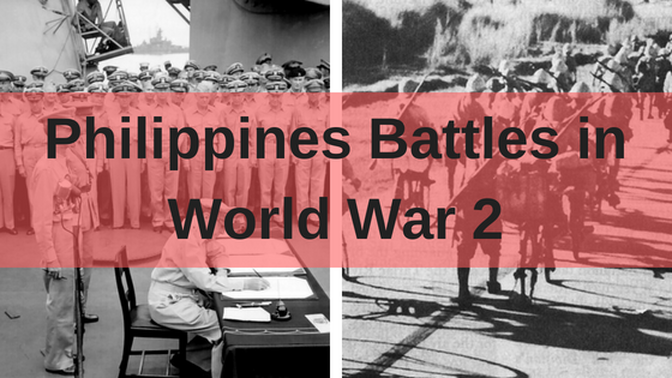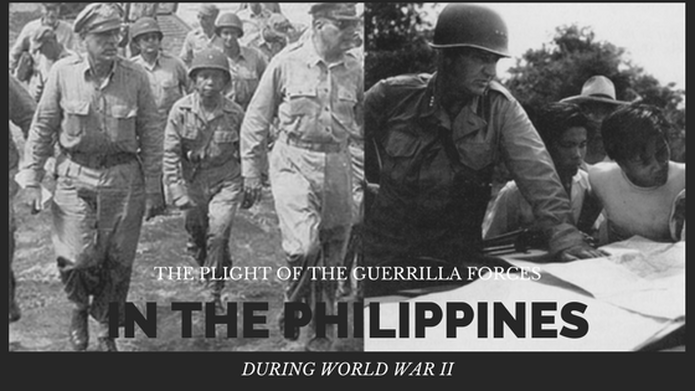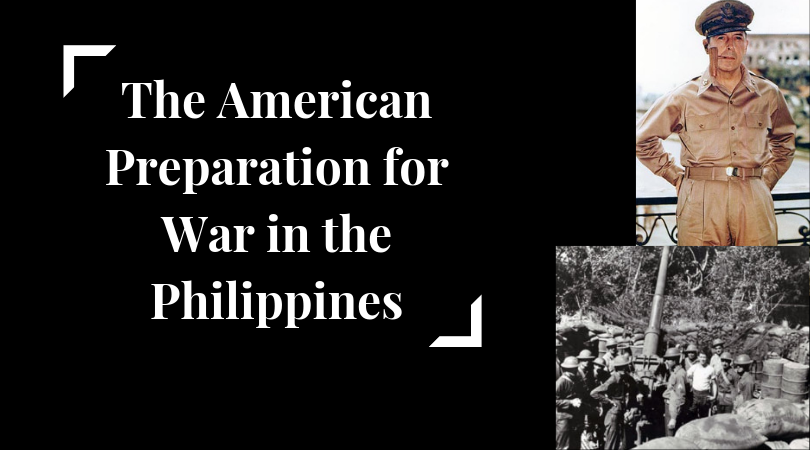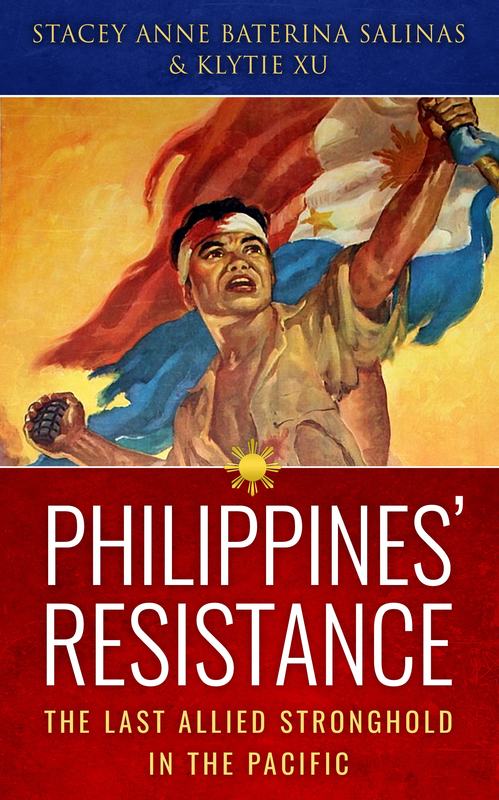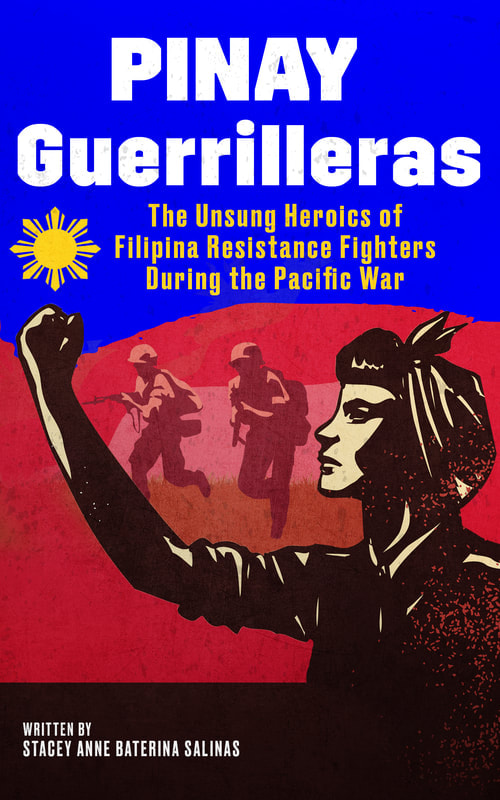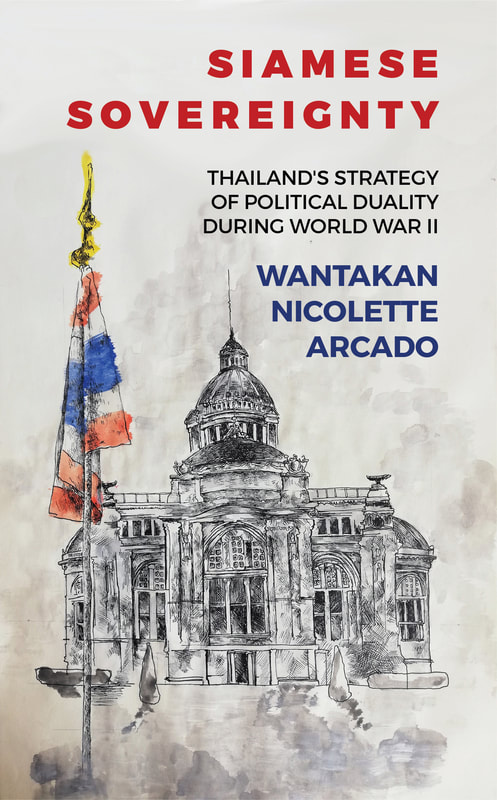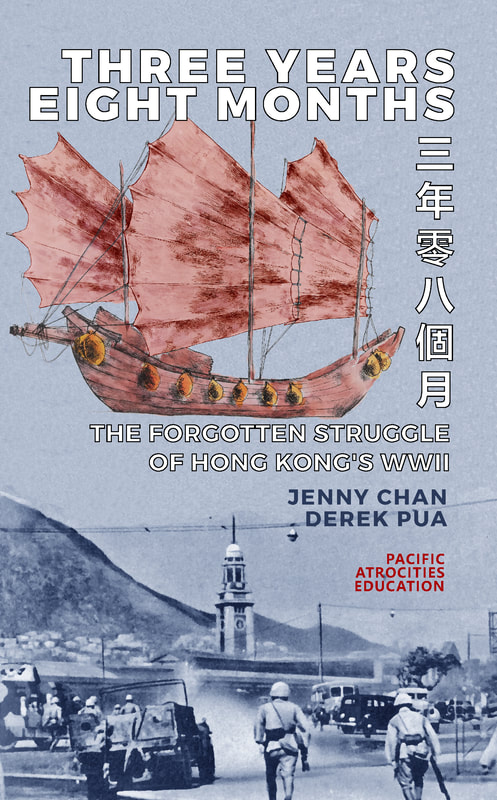|
by Jack Gray
The Philippines played a critical role in American strategy during World War II. Before the war, the United States had large numbers of troops stationed on the islands. After U.S. forces were defeated from the islands, regaining the Philippines became an important goal, especially for General MacArthur, who had been forced to evacuate from his headquarters there in 1942 when the Japanese attacked.
(continued) Accordingly, MacArthur adopted a strategy of island-hopping, which would allow him to steadily drive Japanese forces out of the islands they had conquered, bringing him closer and closer to Japan itself. Unfortunately, the Philippines’ proximity to Japan meant that they were among the last of the occupied islands to be retaken; fighting on the island of Mindanao continued up until the Japanese surrender in August of 1945.
The conflict in the Philippines thus had three main phases. The first was the Japanese invasion, which occurred between December of 1941 and June of 1942. In several battles the Japanese were able to defeat American and Filipino forces and quickly occupy the Philippines. From June 1942 until October 1944, the only fighting that occurred in the Philippines was between Japanese occupying forces and guerrilla resistance fighters. During this second phase there were no large or decisive battles, but rather many ambushes and raids against Japanese outposts. In October 1944, MacArthur and U.S. forces landed on Leyte, one of the southernmost islands in the Philippines. From then on until the end of the war in August 1945, there would be more large-scale fighting as American and Filipino forces recaptured important cities such as Manila and drove the Japanese out of the Philippines. The first battles in the Philippines were raids against American airfields. The Japanese bombed Clark field, Del Carmen field, Nichols field, and Nielson field in the first few days after the attack on Pearl Harbor, destroying much of the United States’ air power in the Philippines. They simultaneously launched preliminary amphibious attacks on or near the island of Luzon with small units, intending to give themselves a foothold to support larger attacks on the main body of U.S. forces in the Philippines. Most of these landings faced no significant opposition, as they did not directly threaten important bases or cities. On December 21, 1941, the Japanese launched their main attack on the Philippines with an amphibious assault at Lingayen Gulf and a second at Lamon Bay. They quickly overpowered combined American and Filipino resistance. This was a disaster for MacArthur, who had based his entire plan for the defense of the Philippines on being able to maintain a strong defense against amphibious landings by the Japanese. Moreover, the Japanese troops landed at Lamon Bay and Lingayen Gulf were easily able to attack Manila, where American headquarters were located. MacArthur decided to evacuate the city of Manila, relocating his headquarters and the seat of the Philippines’ government to Corregidor, an island fortress in Manila Bay. Unable to carry out his original plan of defending the coasts, MacArthur carried out War Plan Orange-3, which called for delaying the Japanese advance at predetermined points in along the Bataan peninsula until reinforcements could arrive from America. This plan had been written with the assumption that the fleet at Pearl Harbor would be able to come to the defense of the Philippines, but with the destruction of those forces, there would be no reinforcements coming. Nonetheless, MacArthur had no other options, with Manila left indefensible and his aircraft destroyed in the first days of the war by Japanese raids. The Bataan peninsula was heavily forested and ideal for defensive warfare, and there U.S. and Filipino forces were able to hold out for several months. However, the Japanese were able to slowly overcome American resistance until at last only Corregidor remained. Realizing the futility of remaining in the Philippines, General MacArthur had evacuated to Australia with his family, leaving General Jonathan Wainwright in command of American and Filipino forces, all of whom remained at Corregidor. The Siege of Corregidor was the final battle of the first phase of the war in the Philippines. The soldiers defending the fortress held out for several months against heavy bombing and artillery fire until finally General Wainwright surrendered on April 9th, 1942. This marked the end of organized resistance in the Philippines, and was the end of the first phase of the war. For the next two years there would be no large-scale battles, but fierce resistance by Filipino guerillas continued for the duration of the war. The long resistance by American soldiers, and subsequent guerilla warfare by Filipinos was unique in World War II. By the time of the American surrender, the Japanese had already conquered countless other islands in the Pacific, reaching as far as the Solomon Islands. Only the Philippines were able to put up any significant resistance. The next major battle in the Philippines occurred in October of 1944 when U.S. Forces landed on Leyte. The Battle of Leyte Gulf lasted for several days and resulted in the destruction of the Imperial Japanese Navy. MacArthur then moved to attack Mindoro, where he established airfields with which to threaten Manila and Luzon, his final objective. The final days of the Philippines’ Campaign were similar to the Japanese invasion. Japanese troops fortified Corregidor Island and fought until February of 1945, when U.S. Forces took control of the island. MacArthur then attacked Manila, which required a month of intense fighting to capture. In the battle over 100,000 Filipino civilians were killed, some murdered by Japanese soldiers and others killed by American bombs. The battle of Manila, which ended in March of 1945, marked the end of Japanese occupation of the Philippines. While individual Japanese units continued to fight until the final surrender in August, there was no official or organized resistance. References
Related ArticlesRelated Books
5 Comments
3/29/2019 07:34:52 am
I want to purchase maps of the battles on all islands
Reply
Bram
3/9/2020 12:28:55 pm
I think you wrote the date is ths following quote wrong.
Reply
William P Linton
4/17/2022 11:18:40 am
Were there any battles or Filipino resistance in Albay, Bicol region? My wife and I are moving there.
Reply
cliford lewis
5/31/2023 10:46:01 pm
Where, what and when??? A "U" shaped valley near Clark that was a major Japanese stronghold during the battle to recapture Clark.. We (Air Force AC&W Radar) wsed it as a 2 week S.E.A.T.O.C. for us before heading to Viet-Nam/
Reply
Leave a Reply. |
- Home
- Stories
-
Internship
- Summer 2024 Internship
- Summer 2023 Internship
- Fall 2022 Internship
- Summer 2022 Internship
- Summer 2021 Internship
- Fall 2020- Spring 2021 Internship
- Summer 2020 Internship
- Fall 2019 Internship
- Summer 2019 Internship >
- School Year 2018-2019 Internship
- Summer 2018 Internship >
- Fall 2017 Internship
- Summer 2017 Internship >
- Books
- Archives
-
Resource Page
-
Supplementary Research Guides
>
- Unit 731 - Guide >
-
Philippines' Resistance - Guide
>
- Philippines World War II Timeline
- The Japanese Invasion & Conquest of the Philippines
- Bataan Death March
- Formation of Underground Philippines Resistance
- Supplies of the Guerrilla Fighters
- The Hukbalahap
- Hunter's ROTC
- Marking's Guerrillas
- United States Army Forces in the Philippines of Northern Luzon (USAFIP-NL)
- The Aetas
- Chinese and Filipino-Chinese Nationalist Guerrilla Units
- The Female Faces of the Philippine Guerrillas
- Rising Sun Flag - Guide >
- Pinay Guerrilleras - Guide >
- Fall of Singapore - Guide >
- Three Years and Eight Months - Guide >
- Siamese Sovereignty - Guide >
- The Khabarovsk War Crimes Trial - Guide >
- Unit 731 Cover-up : The Operation Paperclip of the East - Guide >
- Marutas of Unit 731 - Guide >
- Prince Konoe Memoir - Guide >
- Competing Empires in Burma - Guide >
- Battle of Shanghai - Guide >
- Ishi Shiro - Guide >
- Taiwan The Israel of the East - Guide >
- Seeking Justice for Biological Warfare Victims of Unit 731 - Guide >
- Rice and Revolution - Guide >
- Clash of Empires - Guide >
-
Hunger for Power and Self-SufficiencyI - Guide
>
- The Influence of War Rations on Post-War Culinary Transformations
- How World War II Complicated Food Scarcity and Invention
- American Military Innovations
- Government-Sponsored Food Inventions in Europe during World War II
- Feeding the Army: The Adaptation of Japanese Military Cuisine and Its Impact on the Philippines
- Mixed Dishes: Culinary Innovations Driven by Necessity and Food Scarcity
-
Denial A Quick Look of History of Comfort Women and Present Days’ Complication - Guide
>
- The Comfort Women System and the Fight for Recognition
- The Role of Activism and International Pressure
- The Controversy over Japanese History Textbooks
- The Sonyŏsang Statue and the Symbolism of Public Memorials
- Activism and Support from Japanese Citizens
- The Future of Comfort Women Memorials and Education
- Echoes of Empire: The Power of Japanese Propaganda - Guide >
- Lesson Plans >
-
Supplementary Research Guides
>
|
Pacific Atrocities Education
730 Commercial Street San Francisco, CA 94108 415-988-9889 |
Copyright © 2021 Pacific Atrocities Education.
We are a registered 501 (c)(3) charity. |
- Home
- Stories
-
Internship
- Summer 2024 Internship
- Summer 2023 Internship
- Fall 2022 Internship
- Summer 2022 Internship
- Summer 2021 Internship
- Fall 2020- Spring 2021 Internship
- Summer 2020 Internship
- Fall 2019 Internship
- Summer 2019 Internship >
- School Year 2018-2019 Internship
- Summer 2018 Internship >
- Fall 2017 Internship
- Summer 2017 Internship >
- Books
- Archives
-
Resource Page
-
Supplementary Research Guides
>
- Unit 731 - Guide >
-
Philippines' Resistance - Guide
>
- Philippines World War II Timeline
- The Japanese Invasion & Conquest of the Philippines
- Bataan Death March
- Formation of Underground Philippines Resistance
- Supplies of the Guerrilla Fighters
- The Hukbalahap
- Hunter's ROTC
- Marking's Guerrillas
- United States Army Forces in the Philippines of Northern Luzon (USAFIP-NL)
- The Aetas
- Chinese and Filipino-Chinese Nationalist Guerrilla Units
- The Female Faces of the Philippine Guerrillas
- Rising Sun Flag - Guide >
- Pinay Guerrilleras - Guide >
- Fall of Singapore - Guide >
- Three Years and Eight Months - Guide >
- Siamese Sovereignty - Guide >
- The Khabarovsk War Crimes Trial - Guide >
- Unit 731 Cover-up : The Operation Paperclip of the East - Guide >
- Marutas of Unit 731 - Guide >
- Prince Konoe Memoir - Guide >
- Competing Empires in Burma - Guide >
- Battle of Shanghai - Guide >
- Ishi Shiro - Guide >
- Taiwan The Israel of the East - Guide >
- Seeking Justice for Biological Warfare Victims of Unit 731 - Guide >
- Rice and Revolution - Guide >
- Clash of Empires - Guide >
-
Hunger for Power and Self-SufficiencyI - Guide
>
- The Influence of War Rations on Post-War Culinary Transformations
- How World War II Complicated Food Scarcity and Invention
- American Military Innovations
- Government-Sponsored Food Inventions in Europe during World War II
- Feeding the Army: The Adaptation of Japanese Military Cuisine and Its Impact on the Philippines
- Mixed Dishes: Culinary Innovations Driven by Necessity and Food Scarcity
-
Denial A Quick Look of History of Comfort Women and Present Days’ Complication - Guide
>
- The Comfort Women System and the Fight for Recognition
- The Role of Activism and International Pressure
- The Controversy over Japanese History Textbooks
- The Sonyŏsang Statue and the Symbolism of Public Memorials
- Activism and Support from Japanese Citizens
- The Future of Comfort Women Memorials and Education
- Echoes of Empire: The Power of Japanese Propaganda - Guide >
- Lesson Plans >
-
Supplementary Research Guides
>
